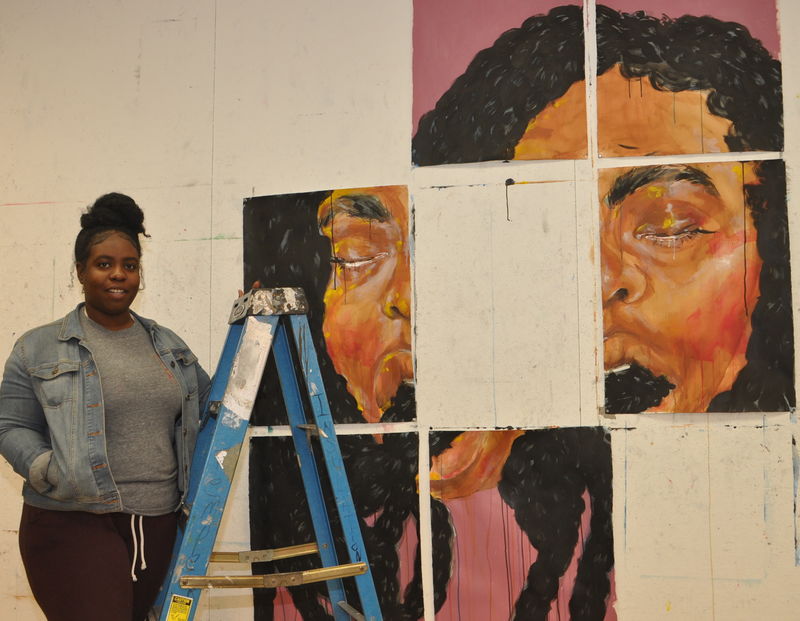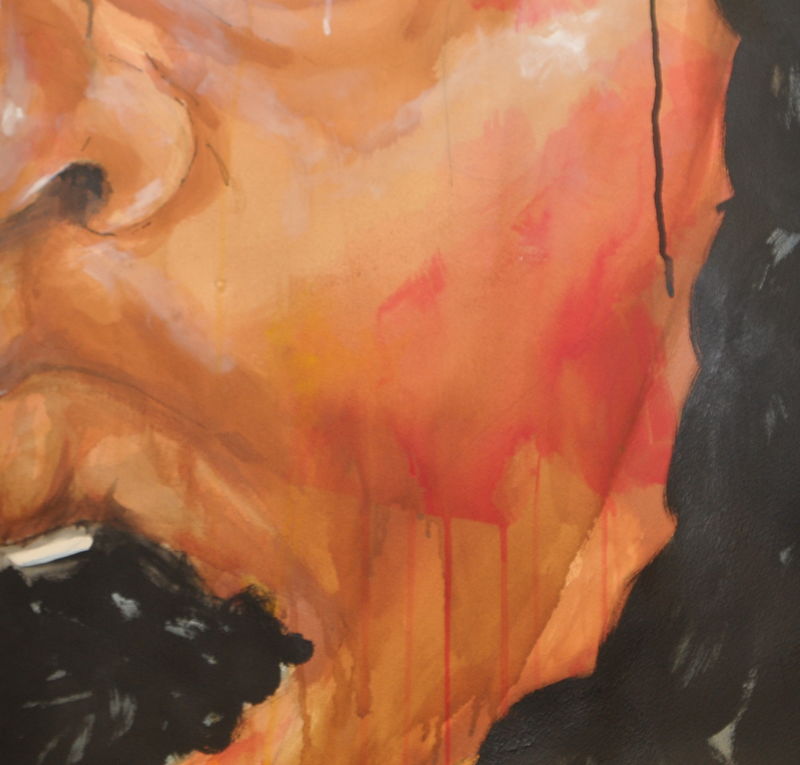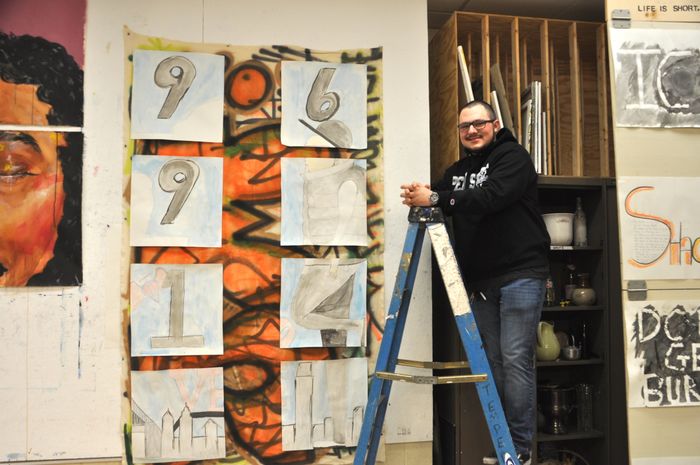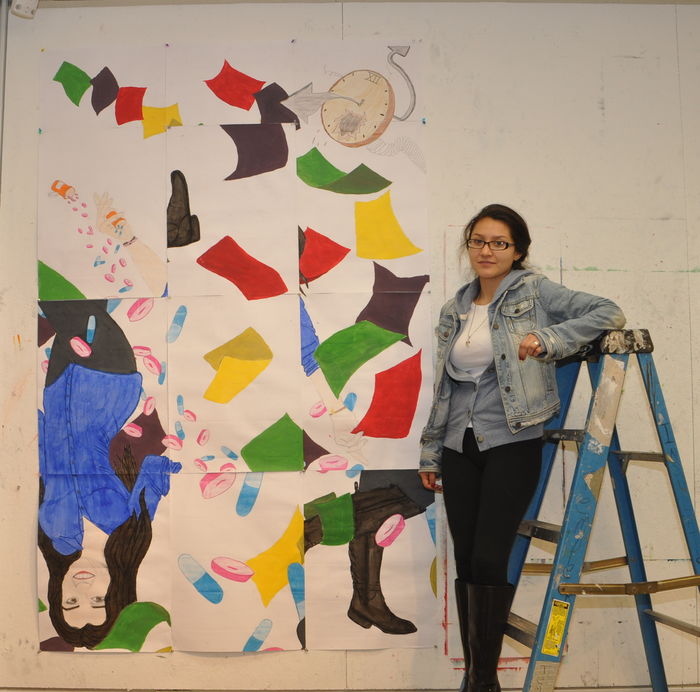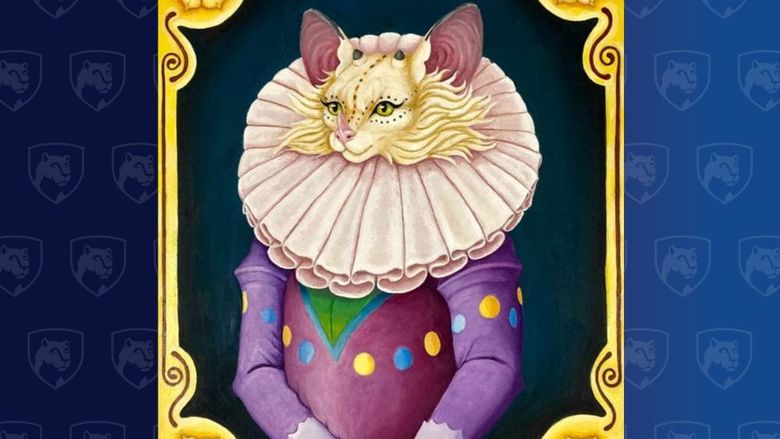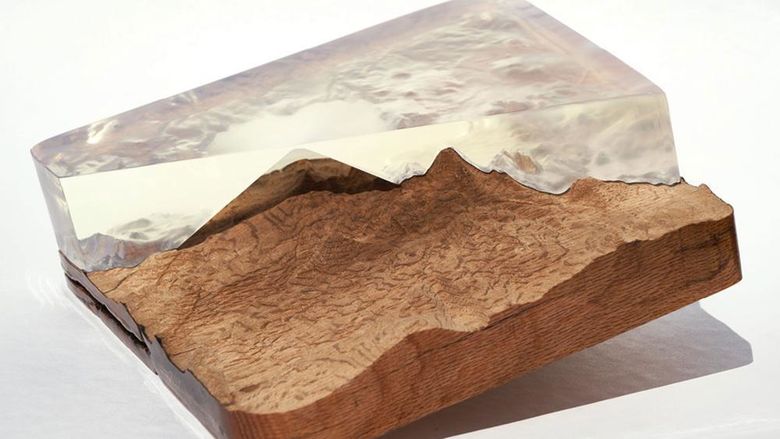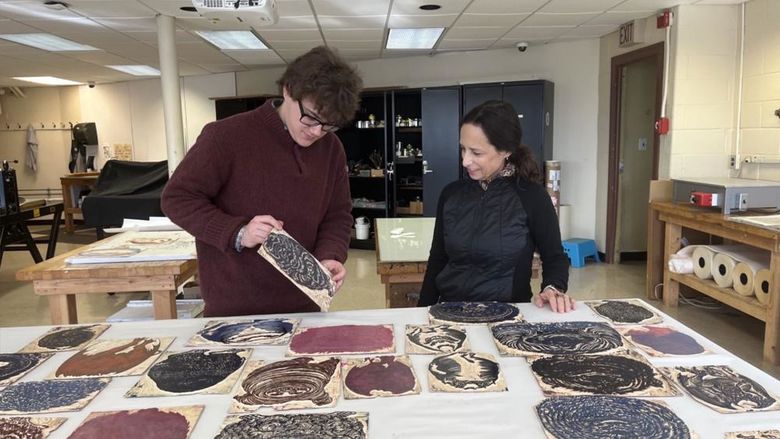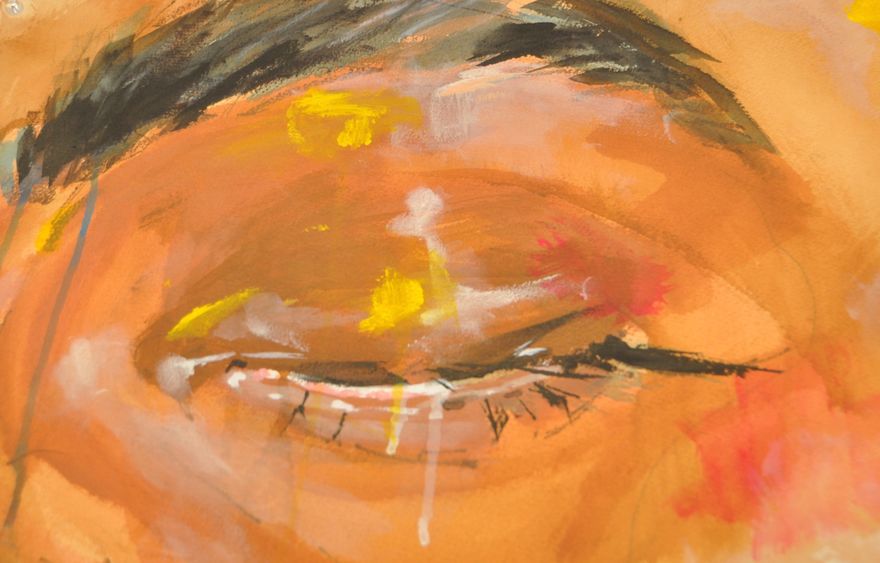
Sophomore Lashawnna Simon painted a 10-foot self-portrait.
ABINGTON, Pa. — Think of the self-portrait as the soul-searching cousin to the ubiquitous selfie, and then walk into a Penn State Abington art studio. One is confronted by 10-foot-tall self-portraits that command the space and immediately feels the emotional impact.
"Why self-portraits?" Emily Steinberg, lecturer in art at Abington, said when asked about the assignment. "Because they are a great metaphor to talk about yourself and where you are coming from. They reflect the internal conflicts and concerns of the artists."
Steinberg asked her students to develop outsized and deeply personal self-portraits.
"All four of these students touched on really interesting themes, very personal aspects, or reflections on their own personalities," she said. "It's their relationship with their hair, ADHD, their roots. They all attacked it with an enthusiasm and depth that I found compelling."
Steinberg offered her students feedback and direction as they assembled the final versions.
"There are so many ways to get in and engage with the work," she said. "You make your own interpretation and bring your own stuff to it. It becomes a collaborative process with the viewer."
